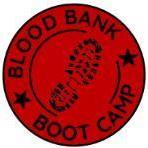
Reputation Activity
-
 Neil Blumberg got a reaction from Darin in Maternal alloantibody, not detected in baby - how long for antigen negative unitsThanks Malcolm. Never say never :).
Neil Blumberg got a reaction from Darin in Maternal alloantibody, not detected in baby - how long for antigen negative unitsThanks Malcolm. Never say never :).
-
 Neil Blumberg got a reaction from Malcolm Needs in Maternal alloantibody, not detected in baby - how long for antigen negative unitsThanks Malcolm. Never say never :).
Neil Blumberg got a reaction from Malcolm Needs in Maternal alloantibody, not detected in baby - how long for antigen negative unitsThanks Malcolm. Never say never :).
-
 Neil Blumberg reacted to Malcolm Needs in Maternal alloantibody, not detected in baby - how long for antigen negative unitsArndt PA, Garratty G, Marfoe RA, Zeger GD. An acute haemolytic transfusion reaction caused by an anti-P1 that reacted at 37 degrees C. Transfusion 1998; 38(4): 373-377. DOI: 10.1046/j.1537-2995.1998.38498257376.x.
Neil Blumberg reacted to Malcolm Needs in Maternal alloantibody, not detected in baby - how long for antigen negative unitsArndt PA, Garratty G, Marfoe RA, Zeger GD. An acute haemolytic transfusion reaction caused by an anti-P1 that reacted at 37 degrees C. Transfusion 1998; 38(4): 373-377. DOI: 10.1046/j.1537-2995.1998.38498257376.x.
Smith D, Aye T, Er LS, Nester T, Delaney M. Acute hemolytic transfusion reaction due to anti-P1: a case report and review of institutional experience. Transfus Med Hemother 2019; 46: 381-384. Published online as DOI: 10.1159/000490897.
Irani MS, Figueroa D, Savage G. Acute hemolytic transfusion reaction due to anti-Leb. Transfusion 2015; 55: 2486-2488. DOI: 10.1111/trf.13178.
Delk AA, Gammon RR, Alvarez H, Benitez N, Bright F, A hemolytic transfusion reaction caused by an unexpected Leb antibody. Laboratory Medicine 2021; 52: 303-306. DOI: 10.1093/labmed/lmaa070.
-
 Neil Blumberg got a reaction from Malcolm Needs in Maternal alloantibody, not detected in baby - how long for antigen negative units"I'm sorry Neil, but Geoff Daniels quotes some HTR's caused by anti-N reacting at 37oC,"
Neil Blumberg got a reaction from Malcolm Needs in Maternal alloantibody, not detected in baby - how long for antigen negative units"I'm sorry Neil, but Geoff Daniels quotes some HTR's caused by anti-N reacting at 37oC,"
These are, if I remember correctly, fairly ancient reports and I have never seen nor heard of a case of hemolytic transfusion reaction or HDFN due to anti-N despite having had hundreds of patients with anti-N in our service over the last half century. I've never heard of anyone else seeing one. So this is very possibly a case of old reports of hemolysis due to other causes (undetected antibodies for example). Methodology for antibody detection in the 1940s and 1950s, and even 1960s, was significantly less sensitive and accurate than currently. There are reports mentioned in Mollison and other comprehensive texts such as Daniels of hemolytic reactions due to antibodies (e.g., anti-P1, anti-Leb, etc.) that have never been reported in modern literature (the last 30-40 years). This makes me suspicious that these old reports are mistaken as to the cause of hemolysis.
If the mother has an anti-N and the infant is not hemolyzing, and the antibody is undetectable I would not transfuse N negative blood. If the infant is hemolyzing, that is another story, obviously. A positive DAT, hemolysis and anti-N in the mother would dictate prudence and transfusing N negative blood. But I will stand by my original comment, which is that anti-N almost never causes clinically significant hemolysis in transfusion recipients nor in affected fetuses. Absent clinical and laboratory evidence for anti-N causing the infant's anemia, there is no reason to transfuse N negative blood when the antibody is not detectable in the fetus/infant.
-
 Neil Blumberg reacted to kjmiller in K Neg units requested for patient with autoimmune aplastic anemiaGood morning, Malcom. Thanks for your reply- she is 61 yrs old and KNeg. I agree also with your approach, but we also have lots of patients with chronic anemias on transfusion support for whom we aren't giving K Neg. Maybe the dr. is just being more proactive in this case.
Neil Blumberg reacted to kjmiller in K Neg units requested for patient with autoimmune aplastic anemiaGood morning, Malcom. Thanks for your reply- she is 61 yrs old and KNeg. I agree also with your approach, but we also have lots of patients with chronic anemias on transfusion support for whom we aren't giving K Neg. Maybe the dr. is just being more proactive in this case.
-
 Neil Blumberg reacted to John C. Staley in Maternal alloantibody, not detected in baby - how long for antigen negative unitsCouple of questions for clarification. What is the specificity of the known Alloantibody? "Baby is born and our testing shows negative antibody screen." Was this AB screen done on mom or baby? If on the baby, was a current ab screen performed on mom and if so what was the results? Was a DAT performed on the baby? If so, what was the result? If not, why not? Thanks
Neil Blumberg reacted to John C. Staley in Maternal alloantibody, not detected in baby - how long for antigen negative unitsCouple of questions for clarification. What is the specificity of the known Alloantibody? "Baby is born and our testing shows negative antibody screen." Was this AB screen done on mom or baby? If on the baby, was a current ab screen performed on mom and if so what was the results? Was a DAT performed on the baby? If so, what was the result? If not, why not? Thanks
-
 Neil Blumberg reacted to Cliff in Maternal alloantibody, not detected in baby - how long for antigen negative unitsThis is an "older" policy as I am no longer with this organization, but we have a large delivery unit and a 50+ bed level I NICU.
Neil Blumberg reacted to Cliff in Maternal alloantibody, not detected in baby - how long for antigen negative unitsThis is an "older" policy as I am no longer with this organization, but we have a large delivery unit and a 50+ bed level I NICU.
Here was our crossmatch policy for babies.
-
 Neil Blumberg got a reaction from John C. Staley in Maternal alloantibody, not detected in baby - how long for antigen negative unitsAnti-N does not cause hemolytic Transfusion reactions nor hemolytic disease of the newborn and fetus. So I would not give N negative blood in general, nor if the cross match is negative.
Neil Blumberg got a reaction from John C. Staley in Maternal alloantibody, not detected in baby - how long for antigen negative unitsAnti-N does not cause hemolytic Transfusion reactions nor hemolytic disease of the newborn and fetus. So I would not give N negative blood in general, nor if the cross match is negative.
-
 Neil Blumberg got a reaction from psykobillys in Plasma transfusionsAlso, were any of the transfused units antigen positive? This is the quickest way to get a negative indirect antiglobulin test ;).
Neil Blumberg got a reaction from psykobillys in Plasma transfusionsAlso, were any of the transfused units antigen positive? This is the quickest way to get a negative indirect antiglobulin test ;).
-
 Neil Blumberg got a reaction from Kelly Guenthner in Plasma transfusionsAlso, were any of the transfused units antigen positive? This is the quickest way to get a negative indirect antiglobulin test ;).
Neil Blumberg got a reaction from Kelly Guenthner in Plasma transfusionsAlso, were any of the transfused units antigen positive? This is the quickest way to get a negative indirect antiglobulin test ;).
-
 Neil Blumberg got a reaction from John C. Staley in Plasma transfusionsAlso, were any of the transfused units antigen positive? This is the quickest way to get a negative indirect antiglobulin test ;).
Neil Blumberg got a reaction from John C. Staley in Plasma transfusionsAlso, were any of the transfused units antigen positive? This is the quickest way to get a negative indirect antiglobulin test ;).
-
 Neil Blumberg got a reaction from Yanxia in Plasma transfusionsAlso, were any of the transfused units antigen positive? This is the quickest way to get a negative indirect antiglobulin test ;).
Neil Blumberg got a reaction from Yanxia in Plasma transfusionsAlso, were any of the transfused units antigen positive? This is the quickest way to get a negative indirect antiglobulin test ;).
-
 Neil Blumberg got a reaction from applejw in Plasma transfusionsAlso, were any of the transfused units antigen positive? This is the quickest way to get a negative indirect antiglobulin test ;).
Neil Blumberg got a reaction from applejw in Plasma transfusionsAlso, were any of the transfused units antigen positive? This is the quickest way to get a negative indirect antiglobulin test ;).
-
 Neil Blumberg got a reaction from Mabel Adams in Gel vs tube for DARA patientsNot yet available. Being developed by Grifols. Probably months to a year away from FDA approval. You can contact them about becoming a testing site for licensure I'd guess. Until it's licensed you won't be able to use it in patient care, just research/validation.
Neil Blumberg got a reaction from Mabel Adams in Gel vs tube for DARA patientsNot yet available. Being developed by Grifols. Probably months to a year away from FDA approval. You can contact them about becoming a testing site for licensure I'd guess. Until it's licensed you won't be able to use it in patient care, just research/validation.
-
 Neil Blumberg got a reaction from Kelly Guenthner in Need AdviceWas the patient transfused? If not, hyper hemolysis is less likely. Sounds like mechanical causes are most likely.
Neil Blumberg got a reaction from Kelly Guenthner in Need AdviceWas the patient transfused? If not, hyper hemolysis is less likely. Sounds like mechanical causes are most likely.
-
 Neil Blumberg got a reaction from Malcolm Needs in Need AdviceWas the patient transfused? If not, hyper hemolysis is less likely. Sounds like mechanical causes are most likely.
Neil Blumberg got a reaction from Malcolm Needs in Need AdviceWas the patient transfused? If not, hyper hemolysis is less likely. Sounds like mechanical causes are most likely.
-
 Neil Blumberg got a reaction from John C. Staley in FDA reportable?Patient should be monitored for a delayed hemolytic transfusion reaction for about 10-14 days, not necessarily in hospital. Most common signs are fever and progressive anemia. sometimes dark urine or jaundice. Patient education before discharge if earlier than this is essential.
Neil Blumberg got a reaction from John C. Staley in FDA reportable?Patient should be monitored for a delayed hemolytic transfusion reaction for about 10-14 days, not necessarily in hospital. Most common signs are fever and progressive anemia. sometimes dark urine or jaundice. Patient education before discharge if earlier than this is essential.
-
 Neil Blumberg got a reaction from John C. Staley in FDA reportable?No, not an error.
Neil Blumberg got a reaction from John C. Staley in FDA reportable?No, not an error.
-
 Neil Blumberg got a reaction from Malcolm Needs in Source of advice on transfusing patients with mismatched stem cell/bone marrow transplants?Thanks Malcolm. Not pedantry at all. These exceptions are relevant and potentially important, particularly for ABO.
Neil Blumberg got a reaction from Malcolm Needs in Source of advice on transfusing patients with mismatched stem cell/bone marrow transplants?Thanks Malcolm. Not pedantry at all. These exceptions are relevant and potentially important, particularly for ABO.
-
 Neil Blumberg got a reaction from John C. Staley in Source of advice on transfusing patients with mismatched stem cell/bone marrow transplants?Thanks Malcolm. Not pedantry at all. These exceptions are relevant and potentially important, particularly for ABO.
Neil Blumberg got a reaction from John C. Staley in Source of advice on transfusing patients with mismatched stem cell/bone marrow transplants?Thanks Malcolm. Not pedantry at all. These exceptions are relevant and potentially important, particularly for ABO.
-
 Neil Blumberg reacted to Malcolm Needs in Source of advice on transfusing patients with mismatched stem cell/bone marrow transplants?Sorry Neil, but I have to point out that this is not completely accurate. Any red cell antigens that are adsorbed onto the red cell surface, rather than being an integral part of the red cell membrane remain the type of the patient, rather than the donor. This is true of the Lewis phenotype (for instance, if the recipient was Le[a+b-], and the donor was Le[a-b+], after the transplant, the red cells will group as Le[a+b-], and not as Le[a-b+]}. This is also true of antigens within the Chido/Rodgers Blood Group System, and certain others.
Neil Blumberg reacted to Malcolm Needs in Source of advice on transfusing patients with mismatched stem cell/bone marrow transplants?Sorry Neil, but I have to point out that this is not completely accurate. Any red cell antigens that are adsorbed onto the red cell surface, rather than being an integral part of the red cell membrane remain the type of the patient, rather than the donor. This is true of the Lewis phenotype (for instance, if the recipient was Le[a+b-], and the donor was Le[a-b+], after the transplant, the red cells will group as Le[a+b-], and not as Le[a-b+]}. This is also true of antigens within the Chido/Rodgers Blood Group System, and certain others.
If the recipient is a Secretor, they will continue to secrete ABO substance of the original ABO type, which, of course, will also be adsorbed onto the red cell surface (as well as being in the plasma, leading to the phenomenon of "accommodation", and this is why most recipients stay with a reverse group of "AB" after an ABO mis-matched stem cell/bone marrow transplant.
SORRY TO BE A PEDANT, PARTICULARLY AS I AGREE WITH EVERYTHING ELSE YOU HAVE WRITTEN!
-
 Neil Blumberg got a reaction from applejw in FDA requirements for 2 people to issue blood products for transfusion.As far as I know there is no FDA requirement for two people to issue blood. Obviously some hospitals have only one person working night shift in the lab, so that isn't happening realistically. There is a traditional requirement for two people to identify the recipient and the transfused product, but this is only if positive patient identification is not used these days.
Neil Blumberg got a reaction from applejw in FDA requirements for 2 people to issue blood products for transfusion.As far as I know there is no FDA requirement for two people to issue blood. Obviously some hospitals have only one person working night shift in the lab, so that isn't happening realistically. There is a traditional requirement for two people to identify the recipient and the transfused product, but this is only if positive patient identification is not used these days.
-
 Neil Blumberg got a reaction from John C. Staley in Source of advice on transfusing patients with mismatched stem cell/bone marrow transplants?Ideally one avoids infusing plasma containing antibodies to recipient antigen. Of course it’s always a bad idea to transfuse antigen to which the recipient has antibodies. We often forget that after transplant all of the recipient cells except the blood cells and immune cells are of the original phenotype.
Neil Blumberg got a reaction from John C. Staley in Source of advice on transfusing patients with mismatched stem cell/bone marrow transplants?Ideally one avoids infusing plasma containing antibodies to recipient antigen. Of course it’s always a bad idea to transfuse antigen to which the recipient has antibodies. We often forget that after transplant all of the recipient cells except the blood cells and immune cells are of the original phenotype.
We often forget that after transplant all of the recipient cells, except the blood cells and immune cells are of the original phenotype.
In this case group AB cells might be safest with no incompatible antigen or antibody. Group A would be my next choice and I would wash or plasma reduce to get rid of the anti-B which will interact with the recipients endothelial cells, soluble antigen and all non-hematopoietic cells of the recipient.
Some folks would use group O red cells which I think is probably the worst possible choice given the potential anti-A and anti-B. Washing or volume reduction would minimize this risk.
-
 Neil Blumberg got a reaction from Mabel Adams in Gel vs tube for DARA patientsWe have educated our multiple myeloma specialists to send a type and screen before administering the first dose of a daratumumab (Darzalex). Our standard operating procedure is to have a panel of three cord blood cells (we have a large OB service) that is a laboratory developed test of sorts. Cord cells do not express CD38 at interfering levels.
Neil Blumberg got a reaction from Mabel Adams in Gel vs tube for DARA patientsWe have educated our multiple myeloma specialists to send a type and screen before administering the first dose of a daratumumab (Darzalex). Our standard operating procedure is to have a panel of three cord blood cells (we have a large OB service) that is a laboratory developed test of sorts. Cord cells do not express CD38 at interfering levels.
As it turns out we have made more of an issue of this than it warrants. Patients who have negative antibody screens essentially never develop new antibodies to red cells after being started on daratumumab probably because it potential inhibits B cells function. Minimal B cell function apparently yields little ability to make antibodies to red cell antigens, which are relatively weak alloantigens, especially when there is no adjuvant or inflammation in the recipient. That said, a manufacturer is making a soluble CD38 analog that will inhibit the anti-CD38 activity and make testing easier from what I've read. DTT treatment is also reasonable. But the good news is that patients on this drug do not make new antibodies. There are literature references to this, and we have probably tested about 500 patients with no new alloantibodies. Mostly non-transfused patients, obviously.
-
 Neil Blumberg got a reaction from Malcolm Needs in Giving same group really that necessaryWhen you have incompatible antigen or antibody, low level hemolysis occurs, probably with complement activation. This is not at levels clinically evident, but inflammation occurs. Inflammation potentiates (increases) B cell activation and provides one mechanism by which ABO non-identical red cell transfusion (without washing) increases rbc alloimmunization to other antigens being presented. It is known to the case, both from clinical observations (referenced in my previous post) and from animal models which provide evidence that the presence of inflammation increases alloimmunization to red cells and other antigens. It's the mechanism by which adjuvants in vaccines increase immunization to microbial antigens in vaccines, by the way. Inflammation. Not a good thing if you are not infected and receiving transfused antigen :). But useful if you are trying to get a beneficial immune response to an antigen.
Neil Blumberg got a reaction from Malcolm Needs in Giving same group really that necessaryWhen you have incompatible antigen or antibody, low level hemolysis occurs, probably with complement activation. This is not at levels clinically evident, but inflammation occurs. Inflammation potentiates (increases) B cell activation and provides one mechanism by which ABO non-identical red cell transfusion (without washing) increases rbc alloimmunization to other antigens being presented. It is known to the case, both from clinical observations (referenced in my previous post) and from animal models which provide evidence that the presence of inflammation increases alloimmunization to red cells and other antigens. It's the mechanism by which adjuvants in vaccines increase immunization to microbial antigens in vaccines, by the way. Inflammation. Not a good thing if you are not infected and receiving transfused antigen :). But useful if you are trying to get a beneficial immune response to an antigen.







